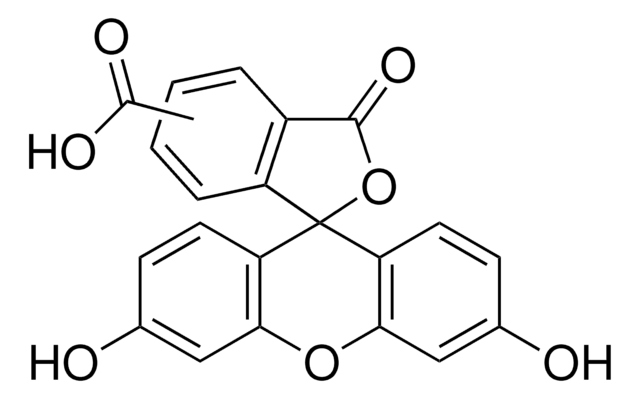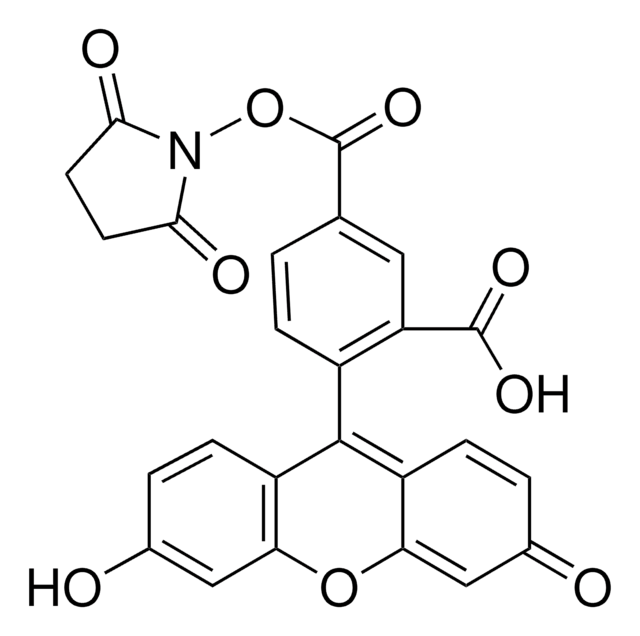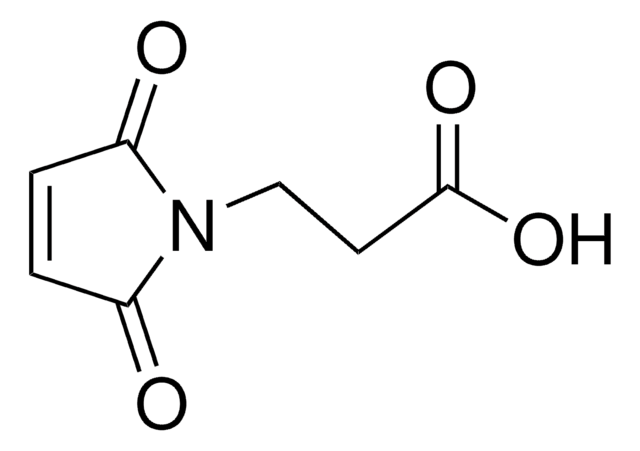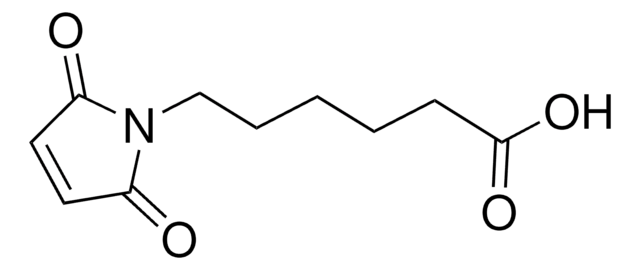21932
5(6)-Carboxynaphthofluorescein
BioReagent, suitable for fluorescence, ≥90% (HPLC)
About This Item
Produtos recomendados
linha de produto
BioReagent
Ensaio
≥90% (HPLC)
Formulário
solid
pKa
7.6
fluorescência
λex 512 nm; λem 567 nm (acid/neutral)
λex 598 nm; λem 668 nm (basic)
adequação
suitable for fluorescence
cadeia de caracteres SMILES
OC(=O)c1ccc2c(c1)C(=O)OC23c4ccc5cc(O)ccc5c4Oc6c3ccc7cc(O)ccc67.OC(=O)c8ccc9C(=O)OC%10(c%11ccc%12cc(O)ccc%12c%11Oc%13c%10ccc%14cc(O)ccc%13%14)c9c8
InChI
1S/2C29H16O7/c30-17-4-6-19-14(11-17)1-9-23-25(19)35-26-20-7-5-18(31)12-15(20)2-10-24(26)29(23)22-8-3-16(27(32)33)13-21(22)28(34)36-29;30-17-4-7-19-14(11-17)2-9-22-25(19)35-26-20-8-5-18(31)12-15(20)3-10-23(26)29(22)24-13-16(27(32)33)1-6-21(24)28(34)36-29/h2*1-13,30-31H,(H,32,33)
chave InChI
ANUHNEJUELPITC-UHFFFAOYSA-N
Aplicação
Código de classe de armazenamento
11 - Combustible Solids
Classe de risco de água (WGK)
WGK 3
Ponto de fulgor (°F)
Not applicable
Ponto de fulgor (°C)
Not applicable
Equipamento de proteção individual
Eyeshields, Gloves, type N95 (US)
Escolha uma das versões mais recentes:
Já possui este produto?
Encontre a documentação dos produtos que você adquiriu recentemente na biblioteca de documentos.
Nossa equipe de cientistas tem experiência em todas as áreas de pesquisa, incluindo Life Sciences, ciência de materiais, síntese química, cromatografia, química analítica e muitas outras.
Entre em contato com a assistência técnica







